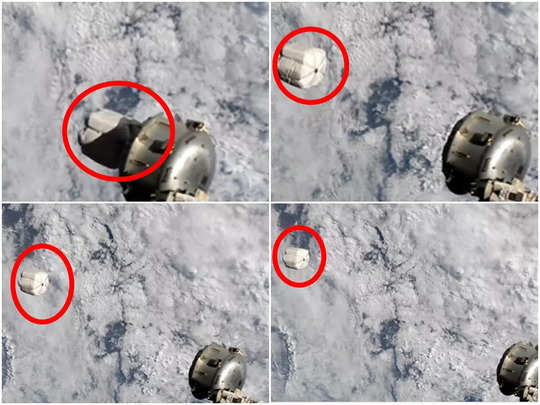
NASA has successfully tested a new waste disposal technology aboard the International Space Station (ISS). In a first, astronauts dropped 78 kilograms of garbage and waste from the International Space Station.
International Space Station gets new waste disposal technology

Astronauts jettisoned almost 78 kg of garbage from the International Space Station (ISS) as a part of a major waste management technology test. The trash bag was dumped from the station’s commercial Bishop Airlock.
The first-of-its-kind technology for disposing of waste has been developed by Nasa’s Johnson Space Center and Nanorocks, a private company.
So far, astronauts have been storing trash in the ISS and sending it back to earth aboard the Cygnus cargo vehicle.
“The technology demonstrates a more efficient and sustainable model for eliminating waste aboard the ISS and highlights a critical new function and utility for all future commercial space stations,” stated Nanorocks.
“This was the first open-close cycle of the Bishop Airlock, our first deployment, and what we hope is the beginning of new, more sustainable ISS disposal operations,” added Dr. Amela Wilson. Dr. Wilson is the CEO of Nanorocks.
More on the new technology
This new method uses a specially designed waste container. Hence, the ISS crew can fill the container mounted in the Bishow Airlock with up to 600 lbs of trash. The waste bag is then released and the Airlock is re-mounted empty.
“Four astronauts can generate up to 2,500 kg of trash per year, or about two trash cans per week. As we move into a time with more people living and working in space. This is a critical function just like it is for everyone at home,” revealed Cooper Read. Reed is the Bishop Airlock program manager at Nanoracks. Additionally, “waste collection in space has been a long-standing, yet not as publicly discussed, challenge aboard the ISS,” he added.
The trash jettisoned this month had foam and packing materials, cargo transfer bags, dirty crew clothing, assorted hygiene products, and used office supplies. The bag burns up upon re-entry into the atmosphere and does not contribute to the creation of any space debris.
